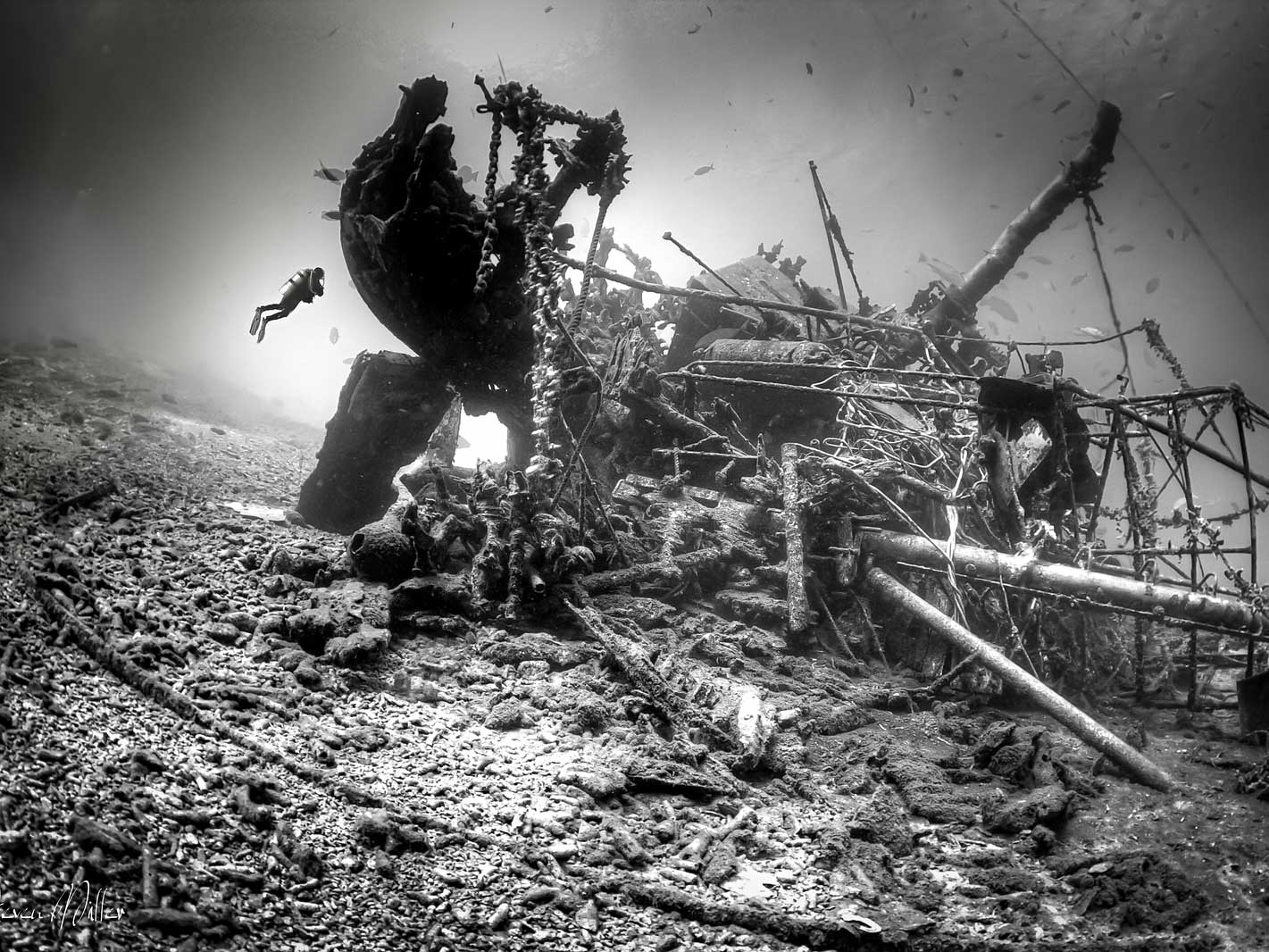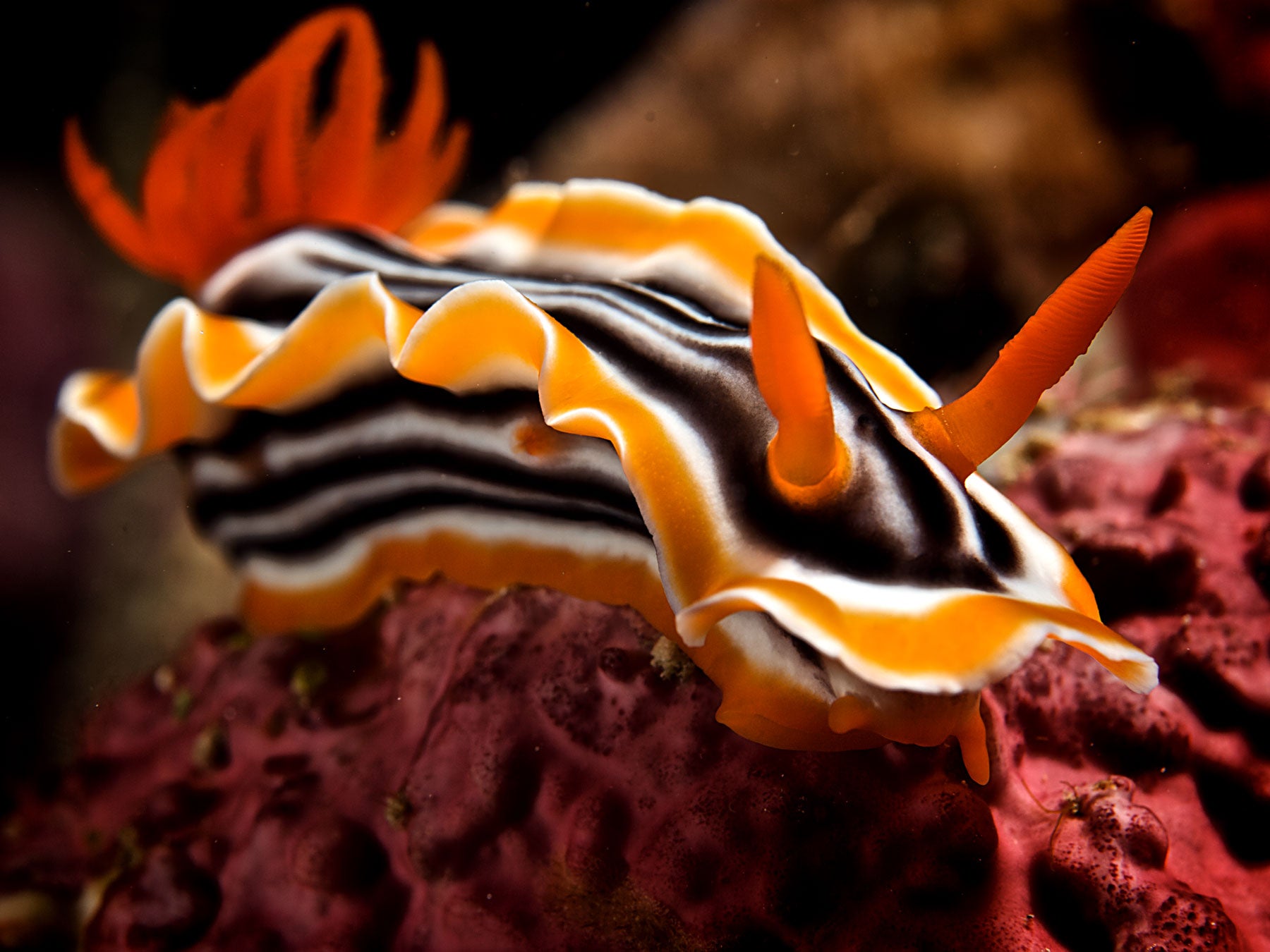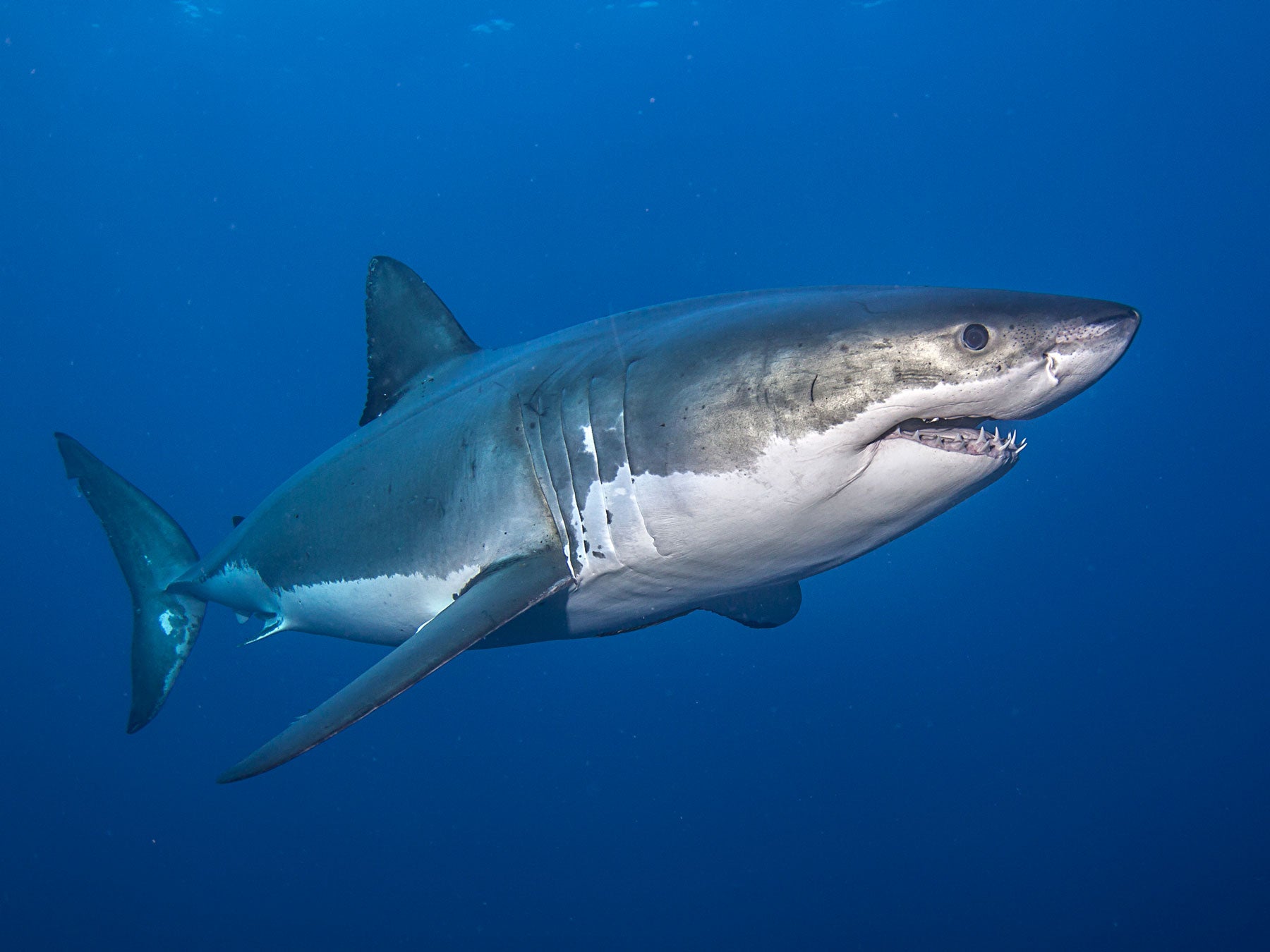Everywhere man has sailed, he has left shipwrecks. For some reason even small boats become mystical and interesting when they sit underneath a few dozen feet of water.
A wide variety of fish and sea life will come to make the wreckage their new home, creating a thriving artificial reef out in the middle of nowhere. Depending in the depth and water conditions, a wreck may stay in tact for decades or quickly degrade into a heap of rubble.
Where
All waters.
DSLR + Mirrorless
ISO: 200-400
Mode: Manual camera (although all program modes can work here)
Aperture: f/8 varying through the entire range
Shutter Speed: 1/30 (carefully) or faster; if you are working with light rays use a fast shutter speed
Lens: Any wide angle lens, preferably rectilinear
Point + Shoot
ISO: 200-400
Mode: M Manual or any program mode
Aperture: f/8 varying through the entire range
Shutter Speed: 1/60 or faster
Focal Length: Full wide angle, optimally with a wide angle dome or wide angle wet lens

Clear water and a wide angle lens are necessary to capture the full length of a wreck in one shot. Some photographers like Cal Kothrade have captured large wrecks in poor visibility by piecing together dozens of photos.
Technique
There are many options here, which is why the settings above are in such a wide range. When we think of classic wreck shots we are often referring to natural light images, since lighting an object as big as a wrecks is typically impossible. If we leave our strobes behind the camera's program modes become useful, although they may be a bit bright and the White Balance may be off. These two issues are easily both fixed in Adobe® Lightroom as long as you shoot RAW.
Since wrecks don't move, they have been shot with slow shutter speeds to let more light in (especially the deeper, darker ones). The widest zoom or prime lens you have will help you be close enough for contrast but still capture the size. Many photographers prefer a rectilinear lens when shooting wrecks since the fisheye curve will noticeably warp the straight lines of manmade objects.
Our favorite wreck images seem to come from crystal clear water (which is rare) and typically have a diver somewhere in the scene for a sense of scale. Look for leading lines and dramatic light; use the sun and the hard edges to make light rays.

Wrecks produce habitat suitable for macro work! Macro and zoom lenses can give you the opportunity to focus on small fish life that have made their homes in these artificial reefs. Macro is a particularly good choice f you've dove the wreck before, or if it's been beat up beyond recognition.
Strobes
Resist the desire to try to light something that you can't. We can use strobes creatively on Wrecks, but we have to be careful. Often their light will be harsh, and obvious. Some tricks are to light up an object in the foreground surrounded by space with the lines of the wreck in the background for a splash of color. You can also try diffusing your strobes with a diffusing dome and shooting from a distance away that creates a very soft fill light (in very clear water this could be 10 feet away). You will lose color saturation at these distances, but you can fill in some details and find some small amount of hue.
There is a difficult and obscure option for wrecks if you are up for a challenge: Light painting. If the visibility is good enough to see the entire wreck, you can use this cave photography trick. Go out at night and make your frame on a tripod, with settings that allow a shutter speed of over a minute. Open the shutter and swim into the scene, "painting” the wreck with a dive light, strobe, or any light source. It is possible to swim through the frame and not show up in the final image.

Program mode and super clear, shallow water can be a great combination for shooting wrecks. This is the Kittiwake off the coast of Grand Cayman island, before a storm knocked it over.
All images Copyright © 2019 Steve Miller
Additional Reading
How To Get the Best Shots When Shooting Wrecks
Black and White Conversion for Underwater Photography
Natural Light Photography Underwater













